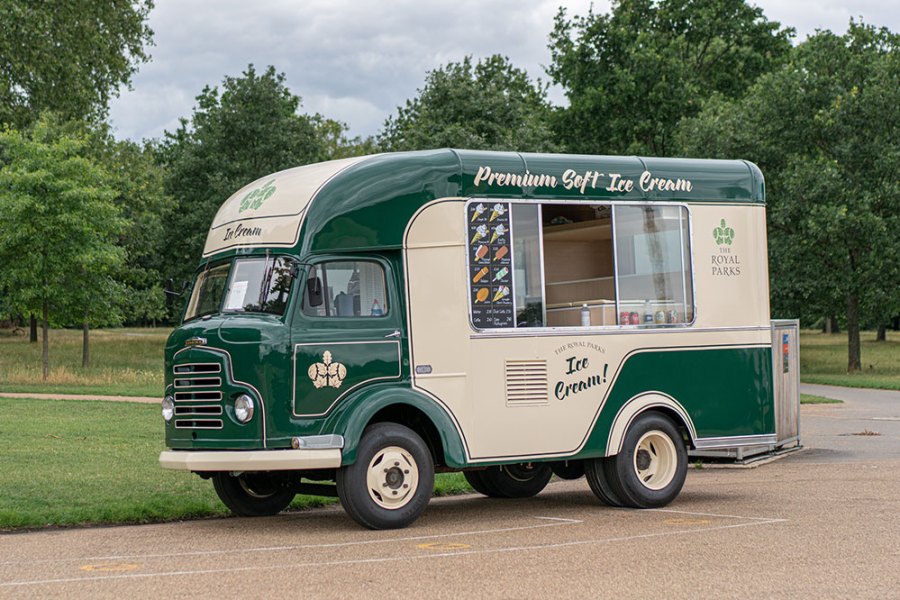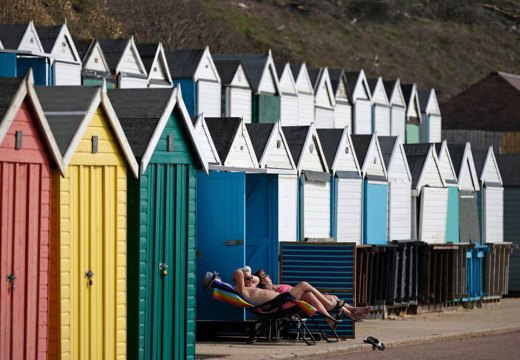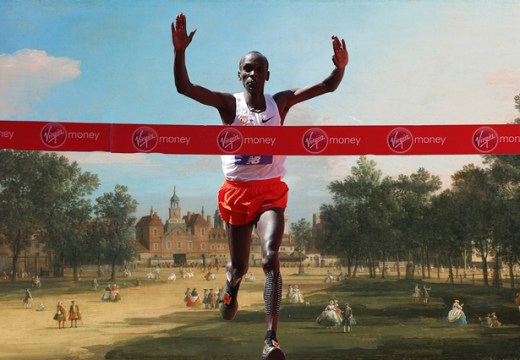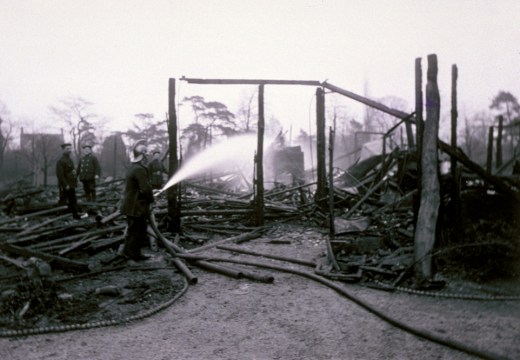During the search for the best ice cream in Venice on holiday, I developed a rule. If the ‘pistachio’ on offer was bright green, rather than an authentic, if unappealing mud colour, then pass by. It went without saying that any window displaying a tub of something bright blue also got the cold shoulder; though there was no shortage of families queuing up for the pleasure of an icy bubble gum hit and a bright purple tongue.
Designers who give food its visible presence; its shape and colour, packaging, restaurant and shop surroundings, are masterful at manipulating these preferences and prejudices. The coffee carts that sell ‘artisan coffee’ use quaint upright angles and retro colours to reassure us that they deal in those old-fashioned virtues – time, skill and good raw materials – as well as the modern (to Brits) business of good coffee. Using the right image to sell ice cream on the move in Britain is in many ways trickier because it comes with so many competing calls on our nostalgia. The retro ‘kerpow’ colours or ‘olde-worlde’ curlicues of the ice lolly wrappers whose pictures adorn ice-cream van windows are definitely not designed to appeal to the consumer whose antennae quiver at freshly-roasted beans or latte art. With one or two exceptions, the gourmet ice-cream seeker is best advised to choose their matcha or sour cherry and mascarpone ice cream from some reassuringly static bricks and mortar. And if there is the word ‘gelato’ somewhere in the mix, so much the better.
The unchanging, brightly painted Mercedes Sprinter or Ford Transit vans, pumping out diesel at the back, Greensleeves at the top and industrially made ‘Mr Softee’ from a nozzle in the middle, transport us adults back to our childhood longings for a 99 flake or an ice lolly. For a long time, the likes of screwball, Funny Feet, Zoom and Fab convinced us that the ice-cream van was a child-only concern – until the Cornetto and then the Magnum came along with the promise of something a little more Italian, a little more sophisticated.

A Colicci ice-cream van in Kensington Gardens. Courtesy Colicci
When ice-cream vans are already as vintage as a Mary Quant mini-skirt, what should we make of the 1930s, ’40s and ’50s style vans which have started to crop up in London parks? Their old-fashioned angles are reminiscent of the coffee carts with their promise of freshly roasted and ground (and perhaps organic and traceable) grown-up bitterness. Their smart livery is a world away from candy pink vans selling ultra-processed gloop that is kept in place with stabilisers so it doesn’t melt in the sun; sweetened with dextrose, glucose and fructose and flavoured with (this is taken from the back of a vegan ice cream tub) ‘exhausted vanilla bean pieces’.
The design of these retro vans has plenty of excellent ‘icy cream’ (as it was first known) history to draw on. Ice cream as we know it began in sweltering 17th-century Naples when it was discovered that bay salt could drop the temperature of ice sufficiently to freeze a ‘sherbet’. Britain eagerly adopted the idea. Here, summers were seldom hot enough to bother the blocks of ice kept in straw in ‘ice houses’. Rain provided lush grass for cows to turn into creamy milk and ‘pastry cooks’, often Italian or French, transformed some of their favourite tastes into ice cream.
The name of London’s earliest ice-cream shop, The Pot and the Pineapple, which opened in 1765, hinted at the luxury on offer at a time when pineapples were shorthand for outrageous levels of opulence. Recipes from 18th- and 19th-century cookbooks promised ices flavoured with bergamot (later used to flavour Earl Grey tea), jasmine, green and black tea, liqueurs and rum punches, as well as a wide range of fruit and nuts, including elderflower and filbert (hazelnut). The famous salty-sweet Parmesan ice cream, in the shape of a wedge of cheese was given a burnt sugar skin. In the second half of the 19th century, when mobile ice-cream sellers – again, many of them Italian immigrants – brought ‘penny licks’, cheap, sweet, solid-as-a-brick ices with, as appalled health inspectors found, coal dust, human and animal hair and fleas as unwitting flavours, to poorer streets, ice cream’s reputation took a nose dive until the early 20th century when Wall’s sent its sellers out with hygienic ice-cream boxes, pulled by tricycles.

Wall’s ice-cream sellers on their rounds in Acton, London (1940). Photo: A.J. O’Brien/Fox Photos/Hulton Archive/Getty Images
The pleasingly archaic ice-cream vans of London’s parks give the promise of old-fashioned ice-cream in the best sense. Not even the most optimistic food historian should expect to find Victorian brown bread ice cream (nutty, caramelly and delicious) in a park in 2023, but perhaps an authentic coffee, pistachio or hazelnut ice cream, or something darkly fruity such as blackcurrant (not strawberry, again) – or at the very least, a decent vanilla, chocolate or caramel?
When I eventually found a van in St James’s park this summer, the lady serving inside said that its style was ‘very old’ – 40 years she thought – and was a tribute by the managing director of Colicci, the company that manages the ice-cream vans, to his father, the founder Ernie Colicci. It offered a short menu of ice lollies and ices of various shapes and sizes, nearly all in Britain’s unvaryingly top-rated flavour, vanilla. I bought the first 99 I’d had in years, probably decades and floated along as I ate it. The park, the pelicans, the people, even the lovely sun melted away, just as it had with every ice-cream treat of my childhood. I was only nominally ‘the consumer’ as I became, myself, consumed by the experience of cold, cream, air, a hint of UHT. Nothing else mattered. Whatever the wrapping, only taste, temperature and texture – food and drink – can deliver a hit of such Proustian nostalgia. The significance of social relations and material culture disappear and in those moments, you experience as a child experiences: absolute happiness.
Unlimited access from just $16 every 3 months
Subscribe to get unlimited and exclusive access to the top art stories, interviews and exhibition reviews.














![Masterpiece [Re]discovery 2022. Photo: Ben Fisher Photography, courtesy of Masterpiece London](http://www.apollo-magazine.com/wp-content/uploads/2022/07/MPL2022_4263.jpg)
It’s time for the government of London to return to its rightful home